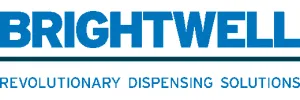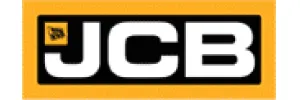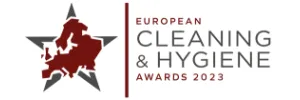News & Insights
Read the latest news from us and our clients across the globe

Posted on 18 March 2015 by adtrak.admin
Safer Sites: Don’t Burst The Bubble
Gary Escott, Director of OnGrade, discusses how technology is helping improve waste management site safety.
Waste and recycling is a high risk industry, with around 4,000 accidents each year. Private companies report around 45% of these and local authorities around 50%. The overall accident rate for the waste industry is around 2,500 per 100,000 workers (nearly five times the national rate).

A third of all fatalities in the waste sector are due to workers being struck by vehicles. While the majority of these accidents take place on the road, waste management sites pose a particular risk because of the close proximity of pedestrian workers and heavy plant.
To improve site safety, the Waste Industry Safety and Health (WISH) forum advises that operators undertake site traffic assessments as part of their continual improvement programme, and implement physical measures and strict procedures to minimise risks to workers.
Don’t burst the bubble
Physical measures that keep pedestrians and vehicles at a safe distance from each other include segregation using physical barriers, road design and signage, and reversing alarms and cameras on vehicles. Safety-driven site operators are now also employing a new generation of safety tools to provide greater protection for their workers.
Paul Stokes, Head of SHEQ at FCC Environment explains: “As one of the UK’s leading environmental services providers, we are always looking to improve the way we manage health and safety. Modern methods, such as the SiteZone Proximity Warning system integrate very well with our other site safety measures and enable us to ensure continual improvement in the safety of our workers.”
FCC Environment has signed up to the Chartered Institution of Wastes Management’s Health and Safety pledge, and is using SiteZone nationally to help protect workers and visitors from vehicle-related accidents.
Using radio frequency identification (RFID), these systems are able to see around corners, through dust and smoke and in poor light conditions, giving targeted warning alarms to both drivers and pedestrians should they enter each other’s working area.
OnGrade’s campaign DON’T BURST THE BUBBLE works on the premise that each vehicle has a danger zone or ‘bubble’ around it, which for safety’s sake should not be breached.
Vehicles are fitted with RFID detectors, while pedestrians have RFID transponders fitted to their hard hat or sleeve. When a pedestrian enters the ‘bubble’ of a vehicle (which can be adjusted to suit each vehicle and site-specific conditions), both the pedestrian and driver receive a ‘proximity warning’.
The RFID tag vibrates, making the pedestrian aware of the vehicle, while the driver is alerted by sound and flashing lights. This two-way alarm feature is fundamental to site safety, since responsibility for avoiding accidents is shared by both parties.
Powerday, for example, own and operate the largest and most efficient recycling facility in southern England. Health and Safety Manager Andre Rayson said: “Powerday are continuously looking for ways to improve the health and safety in all our yards. The need to segregate moving vehicles and plant from pedestrians or workers is essential but not always easy or in fact possible.
“SiteZone has recently provided Powerday with the answer, a workable method of making everyone aware of what’s going on around them and reducing the likelihood of any contact between a vehicle and person. It’s already proved to be very effective and clients and visitors to our yard have already introduced it to their workplaces.”
Management and supervision
RFID warning systems provide an additional protection for site workers, and are an important part of the site safety toolbox. However, the efficacy of any safety measure is also largely dependent on the level of training that workers are given, particularly new recruits and trainees; young people who are particularly vulnerable to accidents; people changing jobs, or taking on new responsibilities; and workers that don’t speak English as a first language.
The Health and Safety Executive recommends that any breaches of rules and systems should be targeted for remedial action, and it is the responsibility of site managers to track these breaches and identify where additional training will be most effective.
There should be a clear management commitment to take responsibility for what takes place on their site. In addition, all operators should be made aware of their personal responsibilities and the consequences for breaches of site rules.
One company already supplying this type of RFID site safety system to its key accounts is major international capital goods supplier CNH Industrial. Designing, producing and selling ‘machines for work’ including tractors, excavators, wheel loaders and trucks, CNH Industrial staff are familiar with the critical need for improved site safety practices and have been supplying OnGrade’s SiteZone system alongside construction plant.
Jim Malia, Strategic Accounts Manager at CNH Industrial, said: “As a supplier of mobile plant across the industry spectrum, more and more customers are enquiring about intelligent site safety systems to reduce the risk of plant-personnel collisions. Key accounts have given us very positive feedback on SiteZone. Personnel appreciate the additional protection, and health and safety managers benefit from the new monitoring capabilities.”
Benchmarking and improving standards
A key benefit of some RFID safety systems is that they are individually identifiable, so records of tag-specific zone intrusions can be collected locally, for example from the SiteZone data log record, or sent back to a cloud-based data logging system.
This enables site managers to identify repeat offenders – those at most risk of injury from approaching vehicles without permission. Managers can then target training towards those at most risk of an accident, and individuals can then be monitored to check they have adopted the required safe working practices.
National managers can then compare and benchmark across multiple sites, identifying hazard spots and best practice and enabling due diligence and continual improvement.
As highlighted by WISH, this combination of physical measures and procedural improvements leads to sites that are safer to work on. Both pedestrian and in-vehicle workers have ownership of their personal safety and managers can do their job – through additional signage, for example, or targeted training.
Introducing intelligent safety systems
With safety continuing to be a key challenge in the waste sector, RFID warning and data logging systems are fast becoming a crucial part of the site safety toolbox. The number of companies and local authorities adopting such systems is constantly growing as managers realise the clear benefits that an intelligent safety system provides.
RFID systems are usually highly effective on waste management sites because they don’t rely on line-of-sight in the same way that CCTV cameras do. For managers considering introducing an RFID safety system, an on-site consultation will help identify how effective such a system could be under particular circumstances. Where equipment requirements are constantly changing, RFID systems can be hired, for example from OnGrade’s partner ESS Safeforce.
This state-of-the-art technology has the potential to vastly improve on-site safety for those working in the waste sector. The data logging element can be used by Health and Safety managers to influence company culture, ownership and control via head office. In turn, these head offices can then influence training and management or supervision in order to influence competence, communications and compliance.
The waste industry is continuing to prioritise worker safety improvements, and with RFID systems waste management sites can become much safer places to work.
Site Safety Toolbox
Safe site
- Segregation of people, vehicles and mobile plant
- Enforced speed limits
- One-way systems
- Traffic signs and lights
Safe vehicles
- RFID warning system
- Good all-round visibility
- Fitted with seatbelts
- Regularly examined and well-maintained
Safe workers
- Individually registered RFID tags
- High-visibility clothing
- Training, instruction and supervision
- Enforcement procedures for the site rules
OnGrade are UK suppliers of innovative machine control and safety solutions for mobile plant.
The SiteZone Proximity Warning System is an aide designed to reduce the risk of personnel and plant collisions. SiteZone is a Radio Frequency Identification (RFID) Proximity Warning System using vibration, audio & visual alerts. Detection zones can be varied depending on the site and vehicle requirements. SiteZone should only be used to complement existing safe systems of work and existing safety practices.
Experts in Public Relations Services & Communications Management
Our ServicesGenuine industry specialists in cleaning and hygiene, environmental and recycling, and facilities management
Our Sectors












